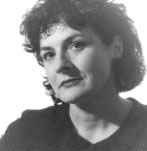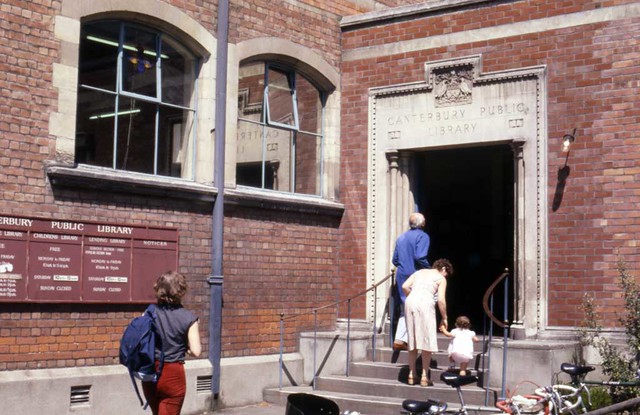There are some wonderful authors and illustrators for children who are coming to Auckland in August as part of the 2016 IBBY Congress. You can read all about who we are excited to meet in our post about the IBBY Congress here on the blog. We approached some of the speakers and asked them a few questions about books and libraries.
 The first featured speaker is award-winning New Zealand author Kate De Goldi:
The first featured speaker is award-winning New Zealand author Kate De Goldi:
What are you most looking forward to when you visit New Zealand for the 2016 IBBY Congress?
I’m looking forward very much to hearing a range of speakers from different literary communities and cultures – hearing about the strengths and deficits in their communities in terms of bringing children and books together. It’s a rare opportunity to hear a number of commentators who have immersed themselves in children’s literature and the reading life of children, so there’s sure to be much to learn.
What is your favourite memory of libraries?
My ur-library was the old Christchurch City Library on the corner of Hereford Street and Oxford Terrace. I spent countless hours there as a child and learned the great pleasure of browsing the shelves, finding old, loved books to reread, but always happening on something new, too, which would often take my reading in another direction. For me, still, there is nothing to rival the pleasure of an unhurried browse of library shelves and a tall pile of books gathered to take home from the library.

Perhaps my favourite memory of that old library was the upstairs reading room where I often took myself (instead of to school) during my seventh form year – and read all manner of unexpected things. In my memory that time and space is associated with intellectual expansion and wonderment – but also a sense of security and uninterrupted self-directed learning.
For the last twenty years the Wellington libraries have been my favourite city spaces, particularly Wellington Central. I have never lost the feeling of cresting excitement when I walk through the automatic doors and into that fabulous abundance of books, of unending potential…
What are 5 of your favourite books?
I read very widely in adult literature and have many favourites, but I’ll confine myself to children’s books for this. These five books are ones I frequently re-read – my criteria for a favourite book.
1. Ounce, dice, trice by Alistair Reid; drawings by Ben Shahn. The New York Review Children’s Collection.
This book is like a visit to a glorious circus – where words dance, fly, juggle and tumble. It’s a celebration of the wildness and wonder of language at play.
2.
Frederick by Leo Lionni; Dragonfly Books
I love all Leo Lionni’s work but especially this timeless fable about the great importance of those who – while seeming idle – are closely observing the world, then giving it back to us as poetry
3. The Red Shoe by Ursula Dubosarsky; Allen & Unwin
I admire Dubosarsky’s work enormously. This is an eerie modern fairytale in which a family three sisters watch – and often misinterpret – the strange goings-on between the important adults in their life. Viewed through the eyes of six year old Matilda, this haunting story reminds us how very differently the young see the world unfolding around them.
4.
The One and Only Ivan by Katherine Applegate; HarperCollins
A life-changing book: Ivan, a silverback gorilla, narrates the story of his captivity and work in a circus mall; with tender voice and images of great beauty, he helps the reader to understand properly the nobility of all living creatures, and the urgent need for kindness to the most vulnerable.
5. The other side of silence by Margaret Mahy; HarperCollins
I think this is the greatest of Mahy’s many splendid novels. Using the elements of a lesser known Grimm tale, ‘Jorinda and Jorindel’ – thick forest, old castle, shape-changing witch, innocent maiden, adventurous young man, captive birds – Mahy weaves a profound and moving – and thoroughly contemporary – story about the riddle of parenting, the manipulation of children, the vanity attendant on talent, the complex responsibilities of the writer, the frailties and possibilities inherent in being human. Somewhere in the RNZ archive there is a most wonderful audio of Bronwyn Bradley reading the book aloud.
What do you love most about the world of children’s literature?
I greatly value a body of literature that has the young eye at the heart of its story telling and exploration of language. It is so good to be reminded again and again (as an adult) what it is like to be new to the world, to be decoding everything around you in order to understand what it is to be human. I deeply appreciate, too, that the very best of children’s writers deepen and expand the form in which they work, offering subtle, nuanced, complex literature to young readers, a literature where story, character, language and moral complexity is rendered as artfully as in any literary form. Many people immersed in the world of children’s literature – writers, critics, academics, readers – have an acute recall of what it is like to be a child. It is not that they are arrested developmentally, more that this part of life is still very present to them, so that their young eye is still working to a high level. I really like meeting people like that!
What you believe is the most important thing that adults can do to encourage children to read?
I think reading oneself – ie, modeling reading to the ever-alert child - is a fundamental requirement. You are demonstrating to children that a fully rounded life includes an sustained reading life.
I think reading aloud to children as far into their school years as possible is very important too. It can tide them over their own reading humps or resistances and bring them to more and more sophisticated story.
Thirdly, ensuring that the local library is a regular and enjoyable part of a child’s life – allowing them to feel that the library is a second home - an astonishing resource in their lives, allowing them to experience the unhurried pleasure of browsing and taking risks with books, allowing them to make friends with librarians. It’s good to own books, of course (if you are able) – particularly for re-reading which I think is an important part of a reading life. But the library’s resources are deeper and more vast than any bookshop’s so it’s an even more important place for the reading life.
Lastly, I would suggest that we need to listen to what our children’s reading interests really are – and validate them, while continuing to provide a range of possibilities. A Lego instruction sheet is a reading experience. A picture book is always a good thing no matter your age. And there’s always room for airheaded series books, too. A thorough reading life for a child will always have dross as well as pearls.



Add a comment to: Fast Five with Kate De Goldi